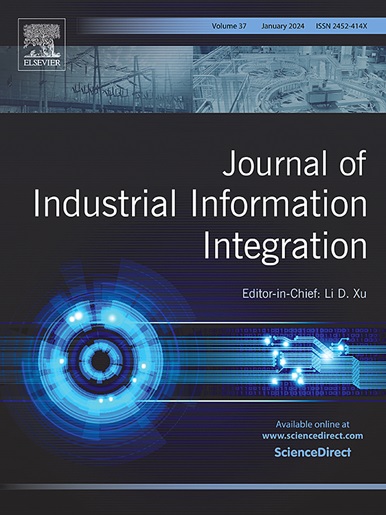Knowledge-enhanced ontology-to-vector for automated ontology concept enrichment in BIM
IF 10.4
1区 计算机科学
Q1 COMPUTER SCIENCE, INTERDISCIPLINARY APPLICATIONS
引用次数: 0
Abstract
Building Information Modeling (BIM) relies on standardized ontologies like IfcOWL to address interoperability. However, the increasing complexity and diversity of construction information requirements demand automated enrichment of BIM ontologies, which is hindered by several factors, including complexity in ontology structure, scalability limitations, and domain-specific issues. Manual curation and maintenance of ontologies are labor-intensive and time-consuming, particularly as the scope of BIM projects expands. Despite these challenges, the construction industry lacks an effective automated approach for ontology concept enrichment. Thus, this study proposes a knowledge-enhanced ontology-to-vector (Keno2Vec) approach for automated BIM ontology concept enrichment, which can (1) encode ontology elements into meaningful and semantically rich embeddings by employing the BERT model to integrate both ontological information (names and labels) and external knowledge (definitions from authoritative knowledge bases), effectively addressing the domain expression specificity and complexity of BIM ontologies; and (2) provide a flexible framework that supports various downstream tasks of ontology concept enrichment by utilizing the resulting embeddings, thereby improving the task-specific adaptability and variability. Experimental results on datasets derived from the large-scale ifcOWL and two smaller BIM ontologies demonstrate that Keno2Vec significantly outperforms existing ontology embedding approaches in terms of accuracy and adaptability. For example, Keno2Vec achieves F1 scores on ifcOWL of nearly 87 % for subsumption prediction, 60 % for property identification, 95 % for membership recognition, and 100 % and 90 % for category-based and schema-based concept classification, respectively. Additional analysis highlights the potential of Keno2Vec for improving BIM ontology encoding and benefiting downstream applications.
BIM中自动化本体概念丰富的知识增强本体到向量
建筑信息模型(BIM)依赖于标准化本体(如 IfcOWL)来解决互操作性问题。然而,建筑信息需求的复杂性和多样性不断增加,这就要求自动丰富 BIM 本体,而本体结构的复杂性、可扩展性限制和特定领域问题等几个因素阻碍了本体的自动丰富。本体的手工整理和维护耗费大量人力和时间,尤其是随着 BIM 项目范围的扩大。尽管存在这些挑战,但建筑行业仍缺乏有效的本体概念充实自动化方法。因此,本研究提出了一种知识增强的本体到向量(Keno2Vec)方法,用于自动丰富 BIM 本体概念,该方法可以:(1)通过使用 BERT 模型将本体信息(名称和标签)和外部知识(来自权威知识库的定义)整合在一起,将本体元素编码为有意义且语义丰富的嵌入,从而有效解决 BIM 本体的领域表达特殊性和复杂性;(2) 提供一个灵活的框架,利用生成的嵌入支持本体概念丰富的各种下游任务,从而提高特定任务的适应性和可变性。在大型 ifcOWL 数据集和两个较小的 BIM 本体上的实验结果表明,Keno2Vec 在准确性和适应性方面明显优于现有的本体嵌入方法。例如,Keno2Vec 在 ifcOWL 上的子归属预测 F1 分数接近 87%,属性识别达到 60%,成员识别达到 95%,基于类别和基于模式的概念分类分别达到 100% 和 90%。其他分析凸显了 Keno2Vec 在改进 BIM 本体编码和惠及下游应用方面的潜力。
本文章由计算机程序翻译,如有差异,请以英文原文为准。
求助全文
约1分钟内获得全文
求助全文
来源期刊

Journal of Industrial Information Integration
Decision Sciences-Information Systems and Management
CiteScore
22.30
自引率
13.40%
发文量
100
期刊介绍:
The Journal of Industrial Information Integration focuses on the industry's transition towards industrial integration and informatization, covering not only hardware and software but also information integration. It serves as a platform for promoting advances in industrial information integration, addressing challenges, issues, and solutions in an interdisciplinary forum for researchers, practitioners, and policy makers.
The Journal of Industrial Information Integration welcomes papers on foundational, technical, and practical aspects of industrial information integration, emphasizing the complex and cross-disciplinary topics that arise in industrial integration. Techniques from mathematical science, computer science, computer engineering, electrical and electronic engineering, manufacturing engineering, and engineering management are crucial in this context.
 求助内容:
求助内容: 应助结果提醒方式:
应助结果提醒方式:


